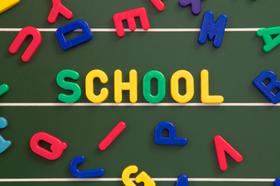Top Rankings
Centennial Public School District ranks among the top 20% of public school district in Minnesota for:
Category
Attribute
Overall Rank
Highest overall rank (Top 10%)
Math Proficiency
Highest math proficiency (Top 10%)
Reading/Language Arts Proficiency
Highest reading/language arts proficiency (Top 20%)
Graduation Rate
Highest graduation rate (Top 20%)
Community Size
Largest student body (number of students) (Top 1%)
For the 2025 school year, there are 2 public preschools serving 533 students in Centennial Public School District. This district's average pre testing ranking is 10/10, which is in the top 10% of public pre schools in Minnesota.
Public Preschools in Centennial Public School District have an average math proficiency score of 69% (versus the Minnesota public pre school average of 46%), and reading proficiency score of 65% (versus the 47% statewide average).
Minority enrollment is 38% of the student body (majority Asian and Hispanic), which is less than the Minnesota public preschool average of 42% (majority Hispanic and Black).
Overview
This School District
This State (MN)
# Schools
18 Schools
722 Schools
# Students
6,772 Students
214,815 Students
# Teachers
368 Teachers
16,916 Teachers
Student : Teacher Ratio
18:1
18:1
Student By Grade
District Rank
Centennial Public School District, which is ranked within the top 10% of all 520 school districts in Minnesota (based off of combined math and reading proficiency testing data) for the 2022-2023 school year.
The school district's graduation rate of 90% has stayed relatively flat over five school years.
Overall District Rank
#36 out of 525 school districts
(Top 10%)
(Top 10%)
Math Test Scores (% Proficient)
62%
46%
Reading/Language Arts Test Scores (% Proficient)
61%
51%
Science Test Scores (% Proficient)
49%
41%
Graduation Rate
90%
84%
Students by Ethnicity:
Diversity Score
0.47
0.63
% American Indian
n/a
2%
% Asian
8%
7%
% Hispanic
6%
13%
% Black
8%
13%
% White
72%
58%
% Hawaiian
n/a
n/a
% Two or more races
6%
7%
All Ethnic Groups
District Revenue and Spending
The revenue/student of $16,501 in this school district is less than the state median of $17,854. The school district revenue/student has stayed relatively flat over four school years.
The school district's spending/student of $14,518 is less than the state median of $18,580. The school district spending/student has stayed relatively flat over four school years.
Total Revenue
$112 MM
$15,547 MM
Spending
$98 MM
$16,179 MM
Revenue / Student
$16,501
$17,854
Spending / Student
$14,518
$18,580
Best Centennial Public School District Public Preschools (2025)
School
(Math and Reading Proficiency)
(Math and Reading Proficiency)
Location
Grades
Students
Rank: #11.
Golden Lake Elementary School
(Math: 69% | Reading: 65%)
Rank:
Rank:
10/
Top 10%10
1 School Rd
Circle Pines, MN 55014
(763) 792-5900
Circle Pines, MN 55014
(763) 792-5900
Grades: PK-5
| 385 students
Rank: n/an/a
Early Childhood Center
Special Education School
575 Birch Street
Circle Pines, MN 55014
(763) 792-6040
Circle Pines, MN 55014
(763) 792-6040
Grades: PK-K
| 148 students
Recent Articles

The 15 Biggest Failures of the American Public Education System
The world is in a constant state of change and those who fail to adjust fall behind. Unfortunately, the American public education system has not kept up with the times and is currently facing a number of serious problems. Keep reading to learn about the biggest failures affecting the modern U.S. public education system as well as some of the trends that could spark change.

Florida Governor Calls for More Funding for State鈥檚 Public School System
Florida Governor Rick Scott has introduced a state budget for next year that pumps one billion more dollars into the public school system. We鈥檒l look at his reasons for the increase and the responses to the proposal.

Can Your Child鈥檚 School Meet the National Standards?
The article discusses the challenges public schools face in meeting national educational standards. It examines current performance trends, identifies key issues affecting student achievement, and explores potential solutions for improving academic outcomes across U.S. public schools.





